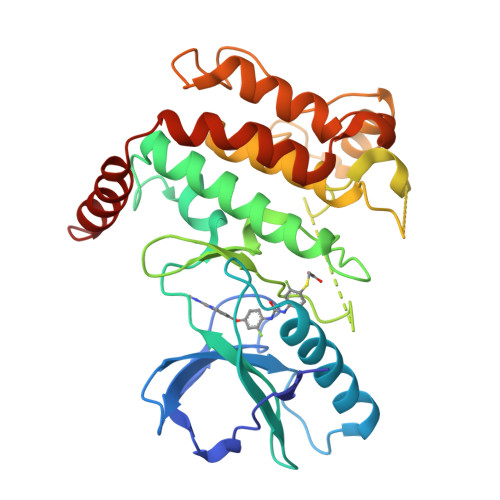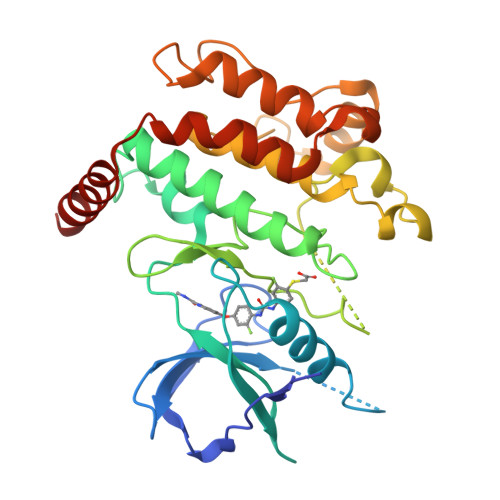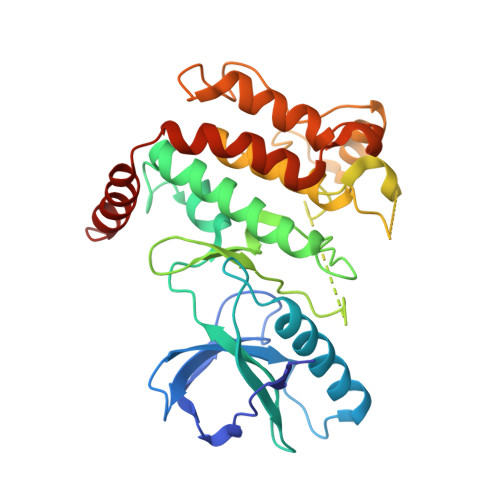Activation loop targeting strategy for design of receptor-interacting protein kinase 2 (RIPK2) inhibitors.
Suebsuwong, C., Pinkas, D.M., Ray, S.S., Bufton, J.C., Dai, B., Bullock, A.N., Degterev, A., Cuny, G.D.(2018) Bioorg Med Chem Lett 28: 577-583
- PubMed: 29409752
- DOI: https://doi.org/10.1016/j.bmcl.2018.01.044
- Primary Citation of Related Structures:
6ES0 - PubMed Abstract:
Development of selective kinase inhibitors remains a challenge due to considerable amino acid sequence similarity among family members particularly in the ATP binding site. Targeting the activation loop might offer improved inhibitor selectivity since this region of kinases is less conserved. However, the strategy presents difficulties due to activation loop flexibility. Herein, we report the design of receptor-interacting protein kinase 2 (RIPK2) inhibitors based on pan-kinase inhibitor regorafenib that aim to engage basic activation loop residues Lys169 or Arg171. We report development of CSR35 that displayed >10-fold selective inhibition of RIPK2 versus VEGFR2, the target of regorafenib. A co-crystal structure of CSR35 with RIPK2 revealed a resolved activation loop with an ionic interaction between the carboxylic acid installed in the inhibitor and the side-chain of Lys169. Our data provides principle feasibility of developing activation loop targeting type II inhibitors as a complementary strategy for achieving improved selectivity.
Organizational Affiliation:
Department of Chemistry, University of Houston, Science and Research Building 2, Houston, TX 77204, USA.


















